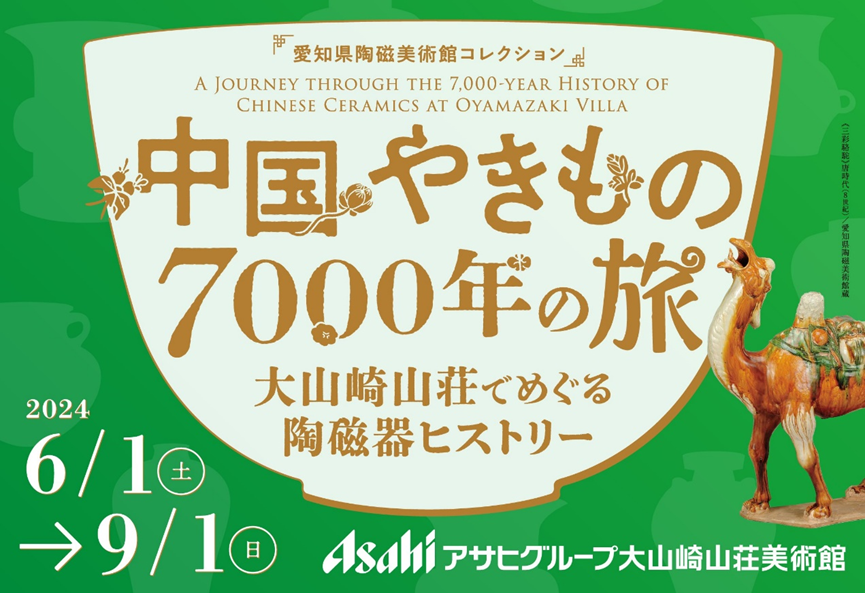
The exhibition Aichi Prefectural Ceramic Museum Collection: A Journey Through the 7000-Year History of Chinese Ceramics opened at Japan’s Oyamazaki Villa Museum of Art on June 1, 2024.
The exhibition features approximately 80 pieces of Chinese ceramics from the collections of the Aichi Prefectural Ceramic Museum, including primitive pottery, Sancai (tri-color) ware of the Tang dynasty, white porcelain, celadon and blue-and-white porcelain, among others. The exhibition showcases the 7000-year history of Chinese ceramics through five sections, dating from the Neolithic Age to China’s Qing dynasty (1644–1911).
Section 1 presents primitive pottery from the Neolithic Age to the early dynastic periods of Xia, Shang and Western Zhou (c.21st century –771 BCE). Section 2 highlights ceramic imitations of metalware from the Warring States period 403–221 BCE), and explores society and everyday life during the Han dynasty (202 BCE–220 CE), as well as the funerary concept of “treating the dead as if they were alive” through ceramic funerary items from this period. Section 3 recounts the development of Chinese ceramic glazes from the Three Kingdoms period to the Sui dynasty (220–618 CE). Section 4 illustrates the global spread of Chinese ceramics during the Tang (618–907 CE), Song (960–1279 CE) and Yuan dynasties (1271 –1368 CE); while Section 5 focuses on ceramic production during the Ming and Qing dynasties (1368–1911). In addition to ceramics produced by the Jingdezhen imperial kiln that reflects aristocratic tastes, the exhibition also features export porcelain from private Zhangzhou kilns. The rustic beauty of these ceramics has earned them popular acclaim in Japan.
The exhibition is open until September 1.
Source: iMuseum, Oyamazaki Villa Museum of Art
